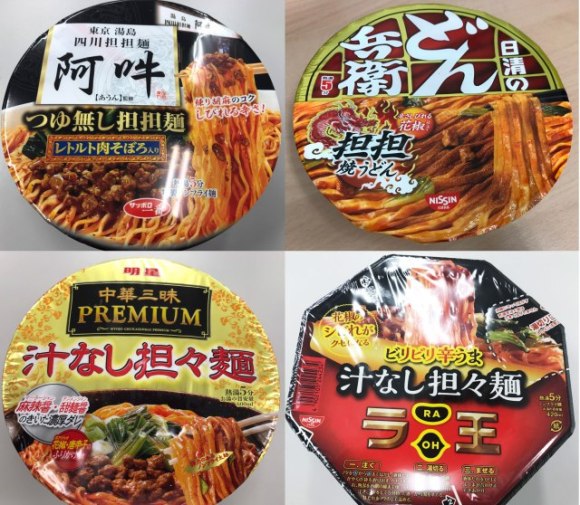
Meg ranks four new broth-less, Szechuan-style cup noodle bowls to find out which ones will have the best taste of China.
Summer is almost upon us, and that means short shorts, beaches, cold drinks, and…spicy food? Yes! A lot of cultures in tropical climates eat spicy food when the temperatures outside start to get hot. Supposedly the sweat produced by the spice makes you feel cooler than eating something cold. Who knew?!
That explains why our Japanese-language correspondent Meg has started craving the spicy Szechuan-style noodle dish, tantanmen. Lucky for her, Japanese convenience stores are of the same mind, and there are now rows upon rows of tantanmen instant cup noodle bowls lining the shelves. 2018 is apparently the year of the broth-less tantanmen, which Meg is okay with. The spice is added directly to the noodles, without the interference of the diluting water…mmm, delicious!
Since the beginning of spring, some of the most famous cup noodle companies have been putting out new broth-less tantanmen bowls, so Meg decided it was high time to try them out. She picked four new products that were labeled as “recommended products” by the convenience store: Ra-Ou Broth-less Tantanmen, Szechuan Tantanmen Oum Broth-less Tantanmen, Don Hyouei Yaki Udon Tantan Szechuan Flavor, and Chinese Luxury Premium Broth-less Tantanmen.
Meg based her ranking on whether each cup presented a true, authentic Szechuan flavor combination of “ma” (numbing spiciness) and “ra” (the spice of the chili peppers). In other words, which is the most deliciously, most authentically spicy tantanmen? Let’s find out!
Number 4: None!
Two noodle brands tied for third place. Meg really couldn’t tell which was better, but that’s because they are so different from one another.
Number 3:
Szechuan Tantanmen Oum Broth-less Tantanmen – released by Sanyo Foods on April 3, 298 yen (US$2.72) (only available at Family Mart)
Bok choy and minced meat are the core of tantanmen; Meg firmly believes that for a perfect bowl, you cannot have too much or too little of either. Sadly, the lack of bok choy in the Oum Broth-less Tantanmen was a big demerit for this brand, since it really took away from the authenticity of the Szechuan flavor.
The pieces of bok choy were disappointingly small, and they got washed away when she drained the water from the noodles! Meg was so depressed when she saw this, she almost didn’t eat her noodles. Yet in the name of journalism, she pressed on.
The flavor actually turned out to be pretty good. It was a little too Japanese in flavor, but the numbingly spicy taste of Szechuan peppers reminded her of the bustling streets of China. Meg was grateful to have the experience of China in her kitchen, thanks to these instant noodles.
Chinese Luxury Premium Broth-less Tantanmen – released by Meisei on April 16, 225 yen ($2.05)
The Chinese Luxury Premium Broth-less Tantanmen, on the other hand, was the cup noodle that made the least impression, in terms of flavor. It was a very mild tantanmen, probably because it contained sweet flour paste. That’s what clearly differentiated this tantanmen from the others.
One good thing about it, though, is that the Szechuan peppers were not finely ground, and they were flaky rather than powdery. That definitely gave it a nice look and delightful flavor!
Broth-less tantanmen is supposed to be spicier and to have a stronger flavor, so this brand didn’t make it higher than third place. But after trying it, Meg decided she liked sweeter versions of tantanmen, too. Since these noodles opened up a new door full of different tantanmen flavors for her, she wasn’t too mad about its milder taste.
Number 2: Don Hyouei Yaki Udon Tantan Szechuan Flavor – released by Nissin Foods on March 26, 180 yen ($1.64)
The first thing Meg noticed about this cup tantanmen was the Szechuan pepper powder. It came in a little packet that tells you how much of it to pour onto your noodles depending on your spice tolerance: just a little for a small bite, half for a medium spiciness level, and the whole thing for a mouth-numbing spiciness.
Undeterred, Meg poured the whole packet in. The powder added a nice, thick, delicious flavor to the noodles, which were also soft and fluffy, in spite of not resting in broth. It stuck to the noodles nicely, too.
It catered to Japanese palates, but it also had a nice ring of the mainland to it, and Meg was very pleased with it.
Number 1: Ra-Ou Broth-less Tantanmen – released by Nissin Foods on March 5, 220 yen ($2.01)
Meg says the completeness of this bowl of instant noodles is unbelievable. While it had an unmistakable flavor from the mainland, it was also made with Japanese consumers in mind. The flavors of the Szechuan peppers that made up the “ma” of this dish were refreshingly floral, reminding one of a very spicy flower garden. It created a sense of eating tantanmen while surrounded by flowers, which really reminded Meg of true Szechuan noodles.
According to Meg, you can feel the Szeuchuan wind on your body as you eat this noodle bowl. It’s got the perfect holy trinity of noodles, toppings, and sauce that is so good it causes the mind to imagine a whimsical origin story:
“The person who made this tantenmen was born and raised in a poor Szechuan village. While on an errand he got lost in the mountain forests and stumbled upon a tantanmen village, where he was taken in by a tantanmen master, and thus began to learn how to make tantanmen.
20 years later, in order to show the world the greatness of tantanmen, he came to Japan with tears in his eyes, carrying a single bindle containing all he possessed. With his tantanmen recipe as his weapon, he launched the Sino-Japanese War against Nissin Foods, and lost valiantly to the Seafood Cup Noodle, but the Nissin Foods president, who had watched his brave battle from the start, said to him, “Why not just work for us?” And thus the broth-less tantanmen was born. (End of Chapter One)”
…that’s how good these cup noodles were, she says.
Numbers one and two were undoubtedly the best of the four noodles. Their balance of flavor, spice, and the international flair from the Szechuan peppers made them top-notch cup noodle tantanmen. And strangely, both are Nissin products! It makes sense, because Nissin has actually been expanding to mainland China and Hong Kong for many years, so they should be familiar with Chinese flavorings.
Meg does want to make clear that, though she had to rank each of these cup noodles, they were all delicious in their own way. They’re also all really spicy, so if lip-numbing food is not your thing, you might want to try Chicken Nugget French Fry Cup Noodles instead! Fans of tantanmen may also enjoy the Michelin Star cup noodle tantanmen with broth, which is guaranteed to be a tasty time.
Images ©SoraNews24
[ Read in Japanese ]

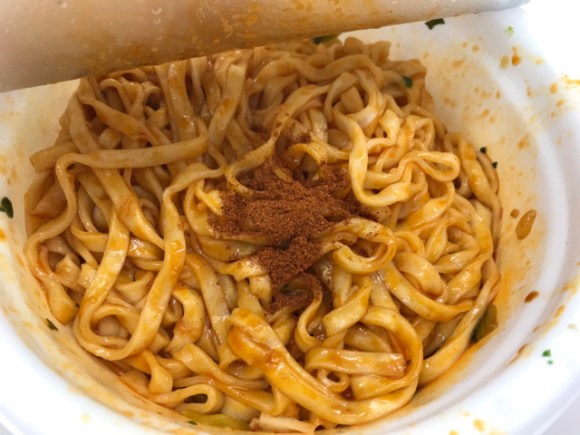
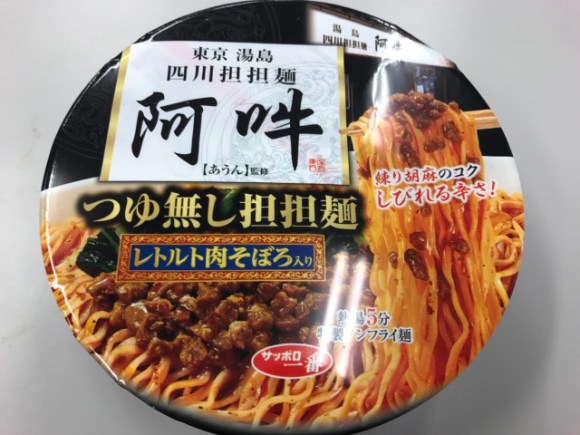
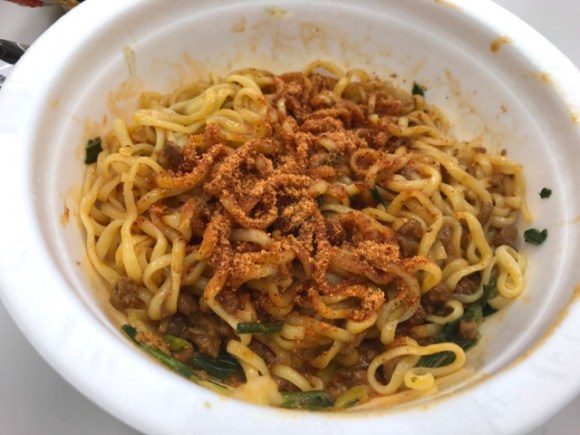
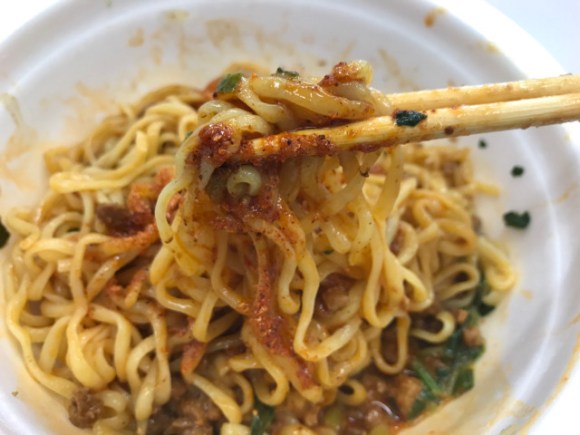
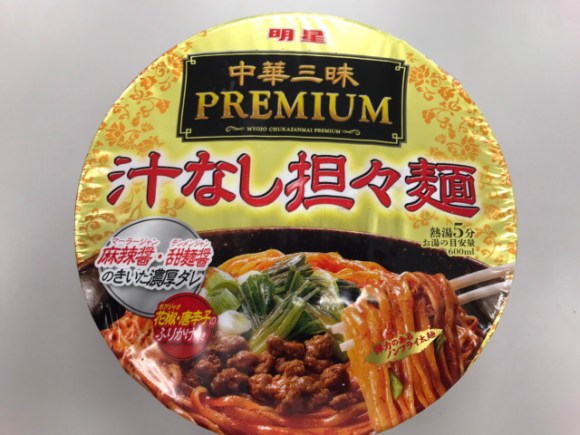
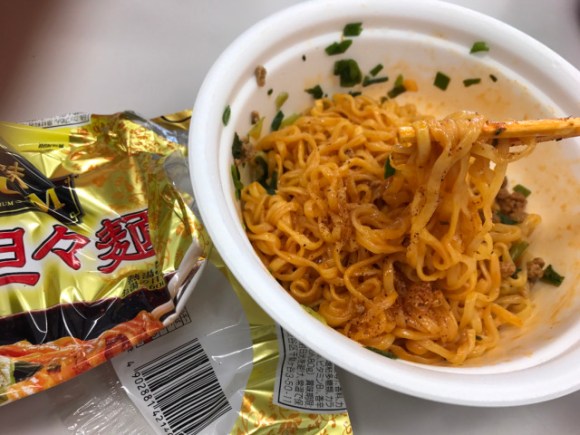
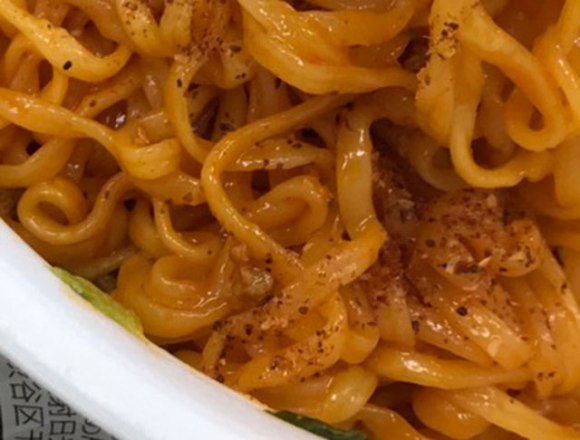
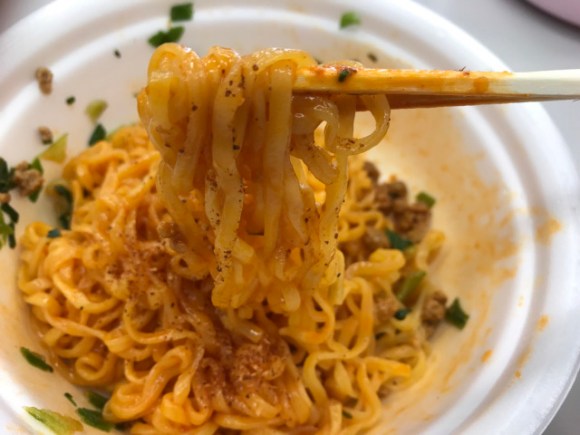
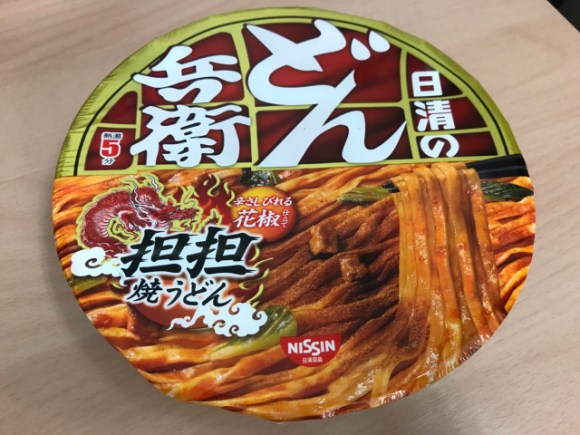
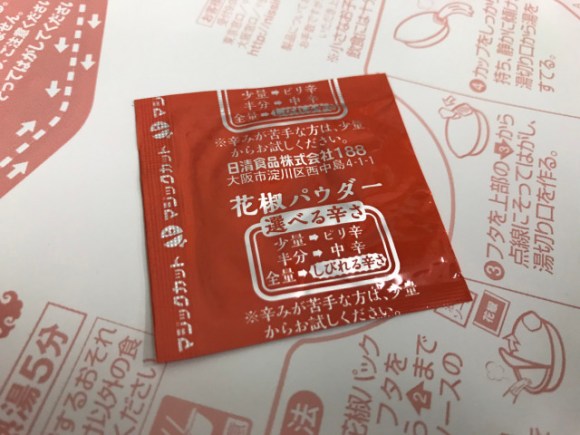
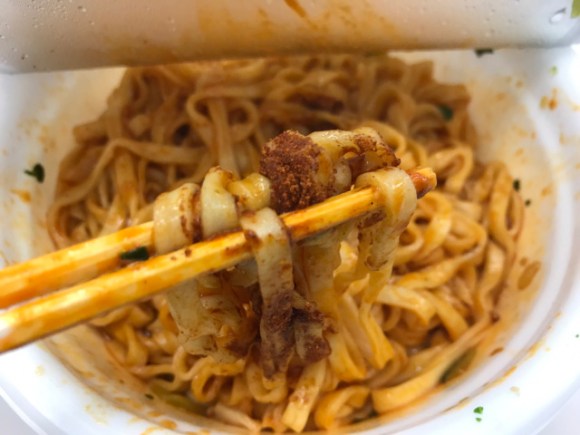
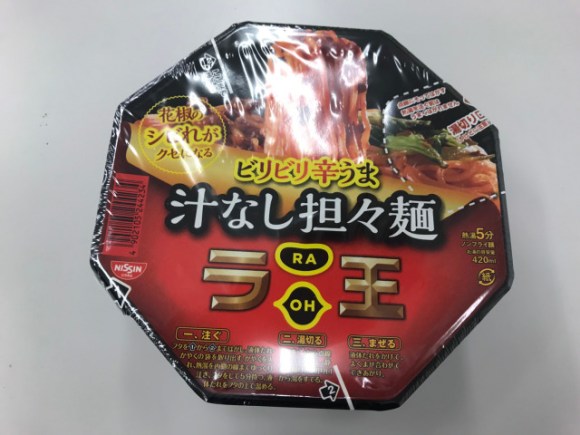
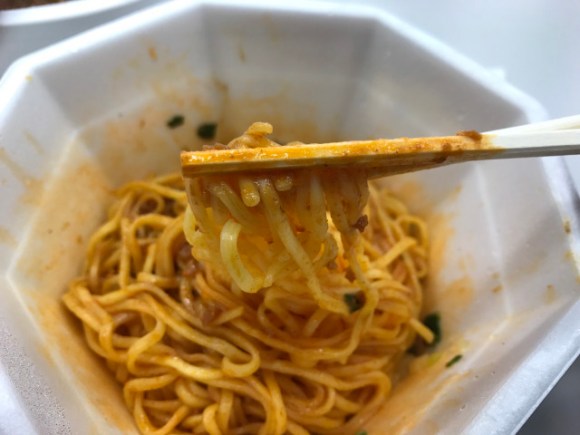
 Frozen pudding pops among the many surprises at Ramen Deniro in Tokyo
Frozen pudding pops among the many surprises at Ramen Deniro in Tokyo This newly opened spot in Shizuoka might be the ramen restaurant with the best views in Japan
This newly opened spot in Shizuoka might be the ramen restaurant with the best views in Japan Cup Noodle’s Nissin releases ultra-nutritious instant ramen with “all nutrients your body needs”
Cup Noodle’s Nissin releases ultra-nutritious instant ramen with “all nutrients your body needs” We try European Cup Noodle Soba flavors to see which ones come out on top 【Taste test】
We try European Cup Noodle Soba flavors to see which ones come out on top 【Taste test】 Brand-new Cardcaptor Sakura Cafe opens in Tokyo this week, with Kero-chan calling the shots
Brand-new Cardcaptor Sakura Cafe opens in Tokyo this week, with Kero-chan calling the shots Foreigner’s request for help in Tokyo makes us sad for the state of society
Foreigner’s request for help in Tokyo makes us sad for the state of society Seaside scenery, history, and so many desserts on Yokohama’s Akai Kutsu【Japan Loop Buses】
Seaside scenery, history, and so many desserts on Yokohama’s Akai Kutsu【Japan Loop Buses】 Japanese city loses residents’ personal data, which was on paper being transported on a windy day
Japanese city loses residents’ personal data, which was on paper being transported on a windy day Red light district sushi restaurant in Tokyo shows us just how wrong we were about it
Red light district sushi restaurant in Tokyo shows us just how wrong we were about it Should you add tartar sauce to Japanese curry rice? CoCo Ichi makes diners an unusual offer
Should you add tartar sauce to Japanese curry rice? CoCo Ichi makes diners an unusual offer French Fries Bread in Tokyo’s Shibuya becomes a hit on social media
French Fries Bread in Tokyo’s Shibuya becomes a hit on social media Harajuku Station’s beautiful old wooden building is set to return, with a new complex around it
Harajuku Station’s beautiful old wooden building is set to return, with a new complex around it Akihabara pop-up shop sells goods made by Japanese prison inmates
Akihabara pop-up shop sells goods made by Japanese prison inmates Doraemon found buried at sea as scene from 1993 anime becomes real life【Photos】
Doraemon found buried at sea as scene from 1993 anime becomes real life【Photos】 Osaka governor suggests lowering voting age to 0 to curb population decline
Osaka governor suggests lowering voting age to 0 to curb population decline McDonald’s new Happy Meals offer up cute and practical Sanrio lifestyle goods
McDonald’s new Happy Meals offer up cute and practical Sanrio lifestyle goods Japanese ramen restaurants under pressure from new yen banknotes
Japanese ramen restaurants under pressure from new yen banknotes Studio Ghibli releases new action figures featuring Nausicaä of the Valley of the Wind characters
Studio Ghibli releases new action figures featuring Nausicaä of the Valley of the Wind characters New private rooms on Tokaido Shinkansen change the way we travel from Tokyo to Kyoto
New private rooms on Tokaido Shinkansen change the way we travel from Tokyo to Kyoto Tokyo Tsukiji fish market site to be redeveloped with 50,000-seat stadium, hotel, shopping center
Tokyo Tsukiji fish market site to be redeveloped with 50,000-seat stadium, hotel, shopping center Beautiful Ghibli sealing wax kits let you create accessories and elegant letter decorations【Pics】
Beautiful Ghibli sealing wax kits let you create accessories and elegant letter decorations【Pics】 Studio Ghibli releases Kiki’s Delivery Service chocolate cake pouches in Japan
Studio Ghibli releases Kiki’s Delivery Service chocolate cake pouches in Japan New definition of “Japanese whiskey” goes into effect to prevent fakes from fooling overseas buyers
New definition of “Japanese whiskey” goes into effect to prevent fakes from fooling overseas buyers Our Japanese reporter visits Costco in the U.S., finds super American and very Japanese things
Our Japanese reporter visits Costco in the U.S., finds super American and very Japanese things All-you-can-drink Starbucks and amazing views part of Tokyo’s new 170 meter-high sky lounge
All-you-can-drink Starbucks and amazing views part of Tokyo’s new 170 meter-high sky lounge More foreign tourists than ever before in history visited Japan last month
More foreign tourists than ever before in history visited Japan last month New Pokémon cakes let you eat your way through Pikachu and all the Eevee evolutions
New Pokémon cakes let you eat your way through Pikachu and all the Eevee evolutions Disney princesses get official manga makeovers for Manga Princess Cafe opening in Tokyo
Disney princesses get official manga makeovers for Manga Princess Cafe opening in Tokyo Sales of Japan’s most convenient train ticket/shopping payment cards suspended indefinitely
Sales of Japan’s most convenient train ticket/shopping payment cards suspended indefinitely Sold-out Studio Ghibli desktop humidifiers are back so Totoro can help you through the dry season
Sold-out Studio Ghibli desktop humidifiers are back so Totoro can help you through the dry season Japanese government to make first change to romanization spelling rules since the 1950s
Japanese government to make first change to romanization spelling rules since the 1950s Ghibli founders Toshio Suzuki and Hayao Miyazaki contribute to Japanese whisky Totoro label design
Ghibli founders Toshio Suzuki and Hayao Miyazaki contribute to Japanese whisky Totoro label design Tokyo’s most famous Starbucks is closed
Tokyo’s most famous Starbucks is closed One Piece characters’ nationalities revealed, but fans have mixed opinions
One Piece characters’ nationalities revealed, but fans have mixed opinions We asked a Uniqlo employee what four things we should buy and their suggestions didn’t disappoint
We asked a Uniqlo employee what four things we should buy and their suggestions didn’t disappoint Princesses, fruits, and blacksmiths: Study reveals the 30 most unusual family names in Japan
Princesses, fruits, and blacksmiths: Study reveals the 30 most unusual family names in Japan Capcom Cafe releases menu for limited-time Monster Hunter: Sunbreak cafe
Capcom Cafe releases menu for limited-time Monster Hunter: Sunbreak cafe Should you add instant ramen toppings before or after adding hot water?【Taste test】
Should you add instant ramen toppings before or after adding hot water?【Taste test】 Michelin star-winning ramen can now be bought nationwide in cup noodle form
Michelin star-winning ramen can now be bought nationwide in cup noodle form We visit the restaurant where Prime Minister Abe ate with reporters, since he didn’t invite us
We visit the restaurant where Prime Minister Abe ate with reporters, since he didn’t invite us Chuka Zanmai instant ramen offering ultra luxurious limited-edition two-meal seat for $50
Chuka Zanmai instant ramen offering ultra luxurious limited-edition two-meal seat for $50 The top 10 most popular instant noodle brands at the start of 2021
The top 10 most popular instant noodle brands at the start of 2021 We try “almost sea urchin” Cup Noodle, the latest chapter in instant ramen trickery【Taste test】
We try “almost sea urchin” Cup Noodle, the latest chapter in instant ramen trickery【Taste test】 We try Thai and Indonesian “Ethnic” Cup Noodles, one of them tastes like spicy Fruit Loops
We try Thai and Indonesian “Ethnic” Cup Noodles, one of them tastes like spicy Fruit Loops Colorful custom Cup Noodles sold at Momofuku Noodle in Osaka with 2,145 different varieties
Colorful custom Cup Noodles sold at Momofuku Noodle in Osaka with 2,145 different varieties Cup Noodle vs 7-Eleven! We test their new scorching instant ramen cups to see who beats at heat
Cup Noodle vs 7-Eleven! We test their new scorching instant ramen cups to see who beats at heat Melon Dr. Pepper appears in Japan, but is it just what the doctor ordered?【Taste test】
Melon Dr. Pepper appears in Japan, but is it just what the doctor ordered?【Taste test】 To eat or to play? Do both with a somen noodle slider from Japan!
To eat or to play? Do both with a somen noodle slider from Japan! We sample the Super Cup 1.5 times x Yoasobi collaboration cup ramen that’s now on sale
We sample the Super Cup 1.5 times x Yoasobi collaboration cup ramen that’s now on sale Japanese stir-fried noodles a huge hit in Kenya
Japanese stir-fried noodles a huge hit in Kenya We try Japan’s super affordable vegan instant cup noodles!
We try Japan’s super affordable vegan instant cup noodles!
Leave a Reply